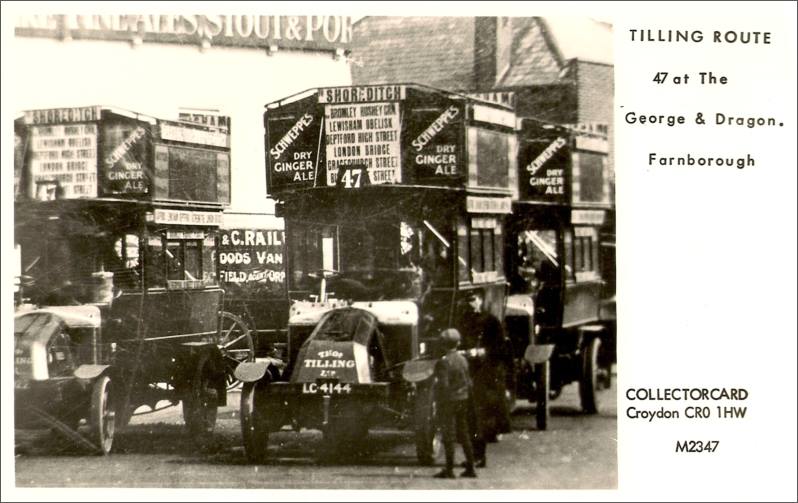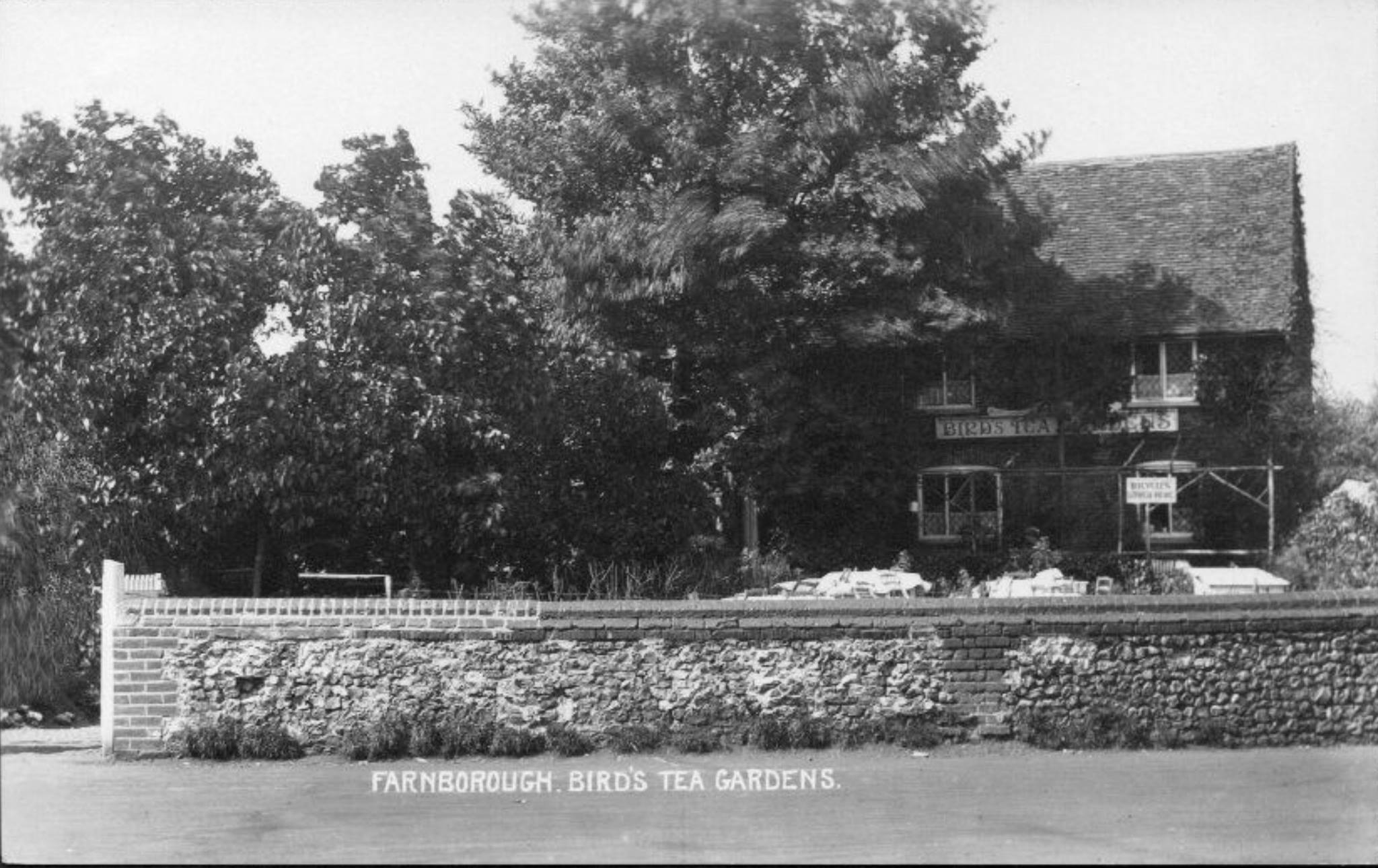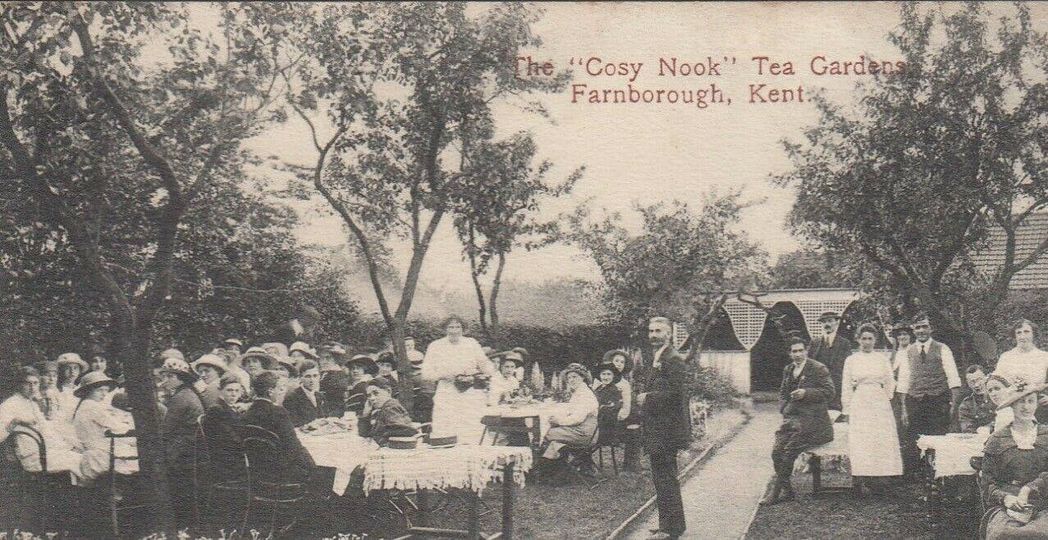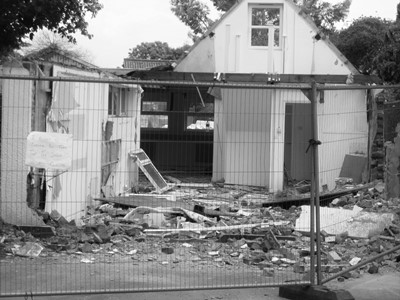


TEA ROOMS
Thomas Tilling Ltd’s motor buses started operation on route 47 between Shoreditch and Bromley on 20 July 1912, replacing a horse bus route from ‘The City’ to Lewisham. Joint working with the London General Omnibus Company, London’s principal bus operator, began in 1908, and came to route 47, by then extended south to Farnborough in 1913.
This first timetable has the title "Country Breezes for City Workers". There were no less than 15 fares to choose from. From Farnborough a journey to Locksbottom cost one halfpenny, while the fare for the whole route was 11 pence.
 |
 |
The service interval was about 8 minutes. Unfortunately there is no indication of how long the journey was expected to take.
Alternate buses coming from London continued to Farnborough, and for many years before and immediately after the Second World War the route was further extended on summer weekends to Knockholt Pound.
The new bus services must have been a welcome development for Farnborough. The village had been an important stop on the turnpike route from London to Tonbridge and Hastings, and from the mid 18th to mid 19th century the Inns and other establishments in the village had done good business. But once the railway age started, this traffic declined. Bromley and Orpington stations were both opened in the 1860s, but despite many proposals the railway never came to Farnborough.

However once the bus route was operating, Farnborough became a popular destination for town dwellers wishing to have a healthy day out in ‘the country’. Farnborough fitted the bill perfectly and extra buses had to be provided on Summer weekends to cope with the crowds. Large queues often formed at the bus turning area in the village.
There were open fields to be seen out of the window on the final run down from Bromley, and the village itself was surrounded by farms. One of these was Plumbridge’s fruit farm, situated on land bought from Neville Lubbock in 1878, and which before the bypass was built stretched right into the heart of the village. A new type of establishment – the Tea Room - grew up to provide sustenance to travellers, and even act as a destination in its own right.
Birds Tea Room
The most prominent of these was Bird’s tea room, situated directly across the road from both the George and Dragon and the bus turning area, and therefore right at the heart of the village. The building was also known as the Elizabethan farmhouse. It was very popular, not least with bus crews taking a well-earned break before heading back toward London.
 |
 |
The photos show the view from Church Road. The building can still be seen in the aerial photo of 1951, still then surrounded by Plumbridge’s land. If it was indeed Elizabethan then it would have been one of the oldest houses in the village. Nevertheless, it escaped becoming grade ll listed, and was eventually, after some years of dereliction, demolished. The site of the tea room is now in the back gardens of houses in Ladycroft Gardens, as seen in these photos from the 1960s and current.
 |
|
The bus turning area has gone of course, but there is at least still a bus stop on the other side of the road.
Cosy Nook
Another longs-standing tea room was the Cosy Nook, situated for many years in a former barn alongside what became 82 the High Street. Originally however it was in one of the two adjacent houses – the Swiss Cottages. See photo top left.The Cosy Nook was first recorded In 1918. George Miles lived at number 1, Swiss Cottage, whilst number 2 Swiss Cottage and Cosy Nook tearoom, was home to Walter Wells, a carpenter, and the outbuilding became his workshop.
All three buildings had been owned by the Plumbridge’s since 1874, but they were sold in 1922 to Beatrice Wells. To acquire the two houses and outbuilding. Beatrice took out a mortgage, which took seven years to repay. As a consequence, number 1 became her home, number 2 became The Cosy Nook tearoom and eventually the outbuilding also became part of the tearooms, probably as a necessity to pay off the mortgage. However, the tearoom became very popular as many photographs of the time reflect.

In 1932, Beatrice Wells sold the business and property to Anthony Razzetti. Anthony Razzetti, a caterer, was living in New Cross Road when he purchased the two houses and tearoom for £1350. Upon completion of the sale he moved into number 1, and Beatrice and Walter Wells moved to the Larches, Green Street Green.
In 1961 Anthony Razzetti died and the following year, 1962, his wife Bessie also passed away. This is when the tearoom and the two houses were separated into three plots and sold off independently. In 1965 the former tearoom, now number 81 was sold to Ward’s Flexible Rod Company, followed in 1966 by the sale of number 1 Swiss Cottage as number 85 High Street. Number 2 Swiss Cottage was sold in 1969 as number 83.
At various times over the next fifty years the former tearoom became a dental practice, an Insurance Agents office, a Surveyor’s office and finally offices for Brouard’s Architects.
The former Tea Room is now no more, see panel to the right.
FARNBOROUGH VILLAGE
Tea Rooms Today
In modern times tea rooms have had mixed success in Farnborough. The bus is no longer the primary means of getting to them, but they can be popular with walkers, cyclists and local residents. One of the more successful of these of course has been Americarlo’s, now known as ‘The Café’.The End of the Cosy Nook
At various times over the last fifty years the former tearoom became a dental practice, an Insurance Agents office, a surveyors office and finally offices for Brouard’s Architects.During 2016 Brouard's had the offices demolished, and replaced by a new structure containing Architects offices on the ground floor, with a house for Mr and Mrs Brouard above.

